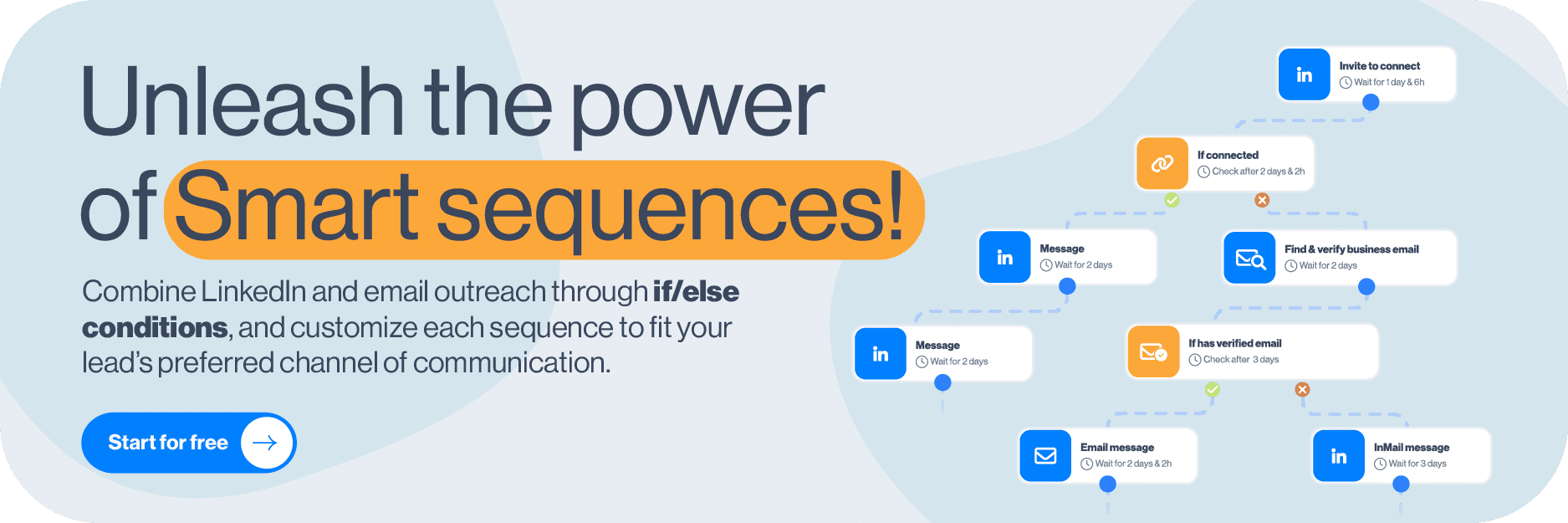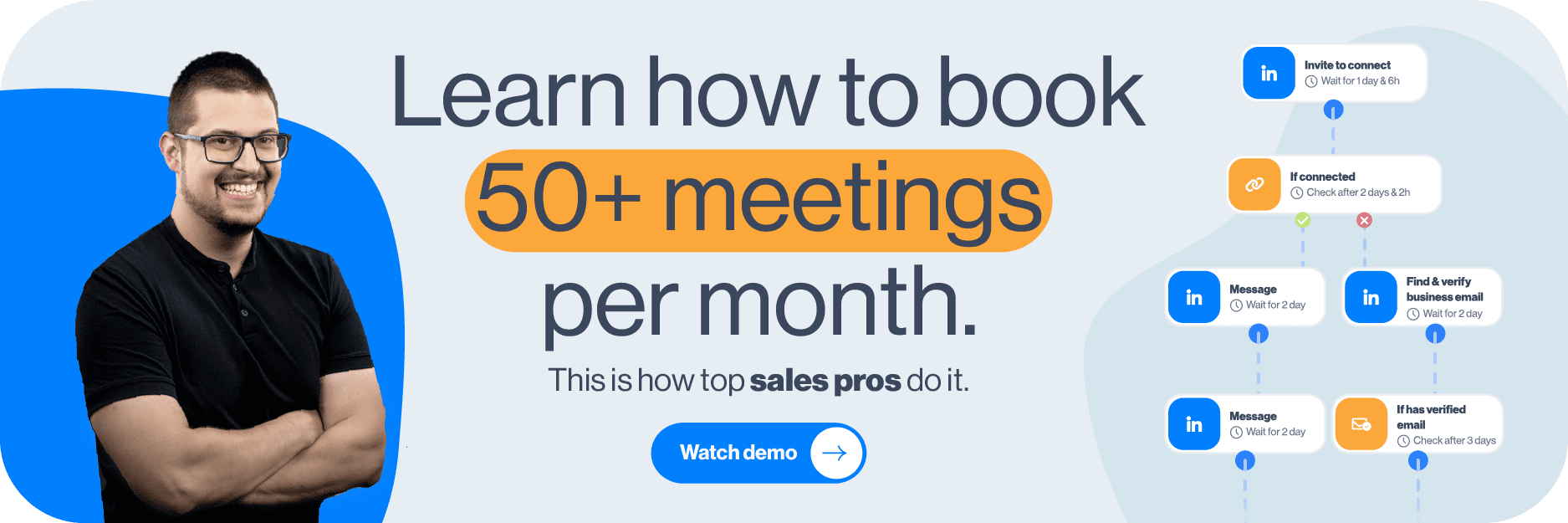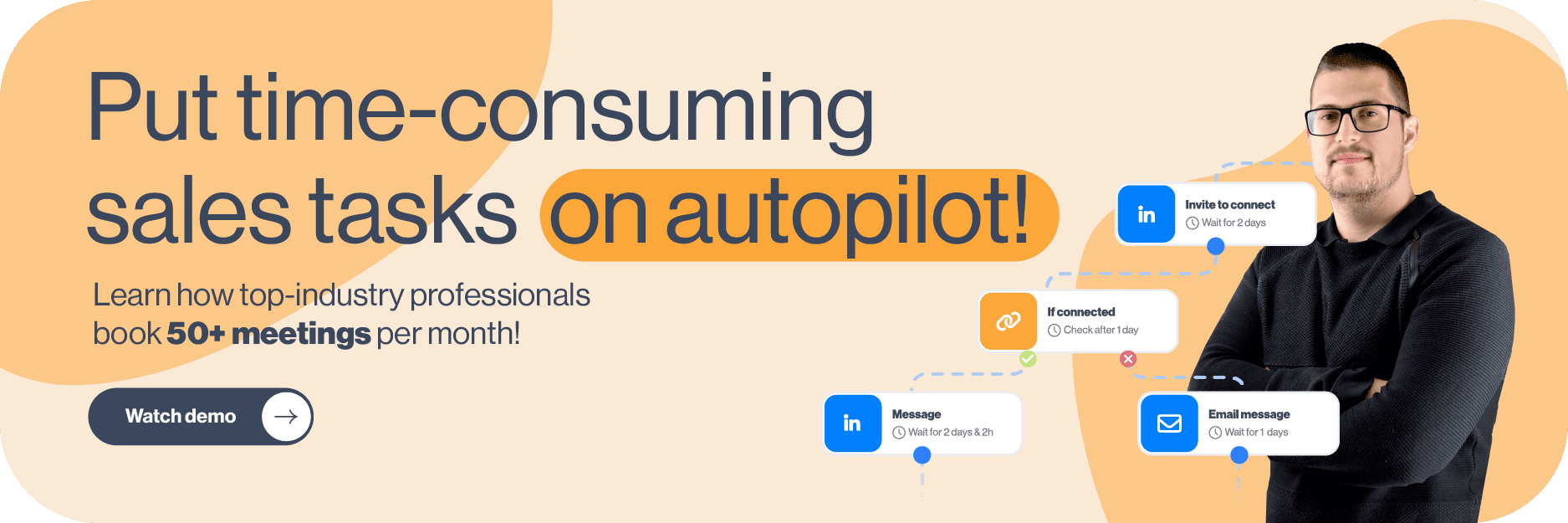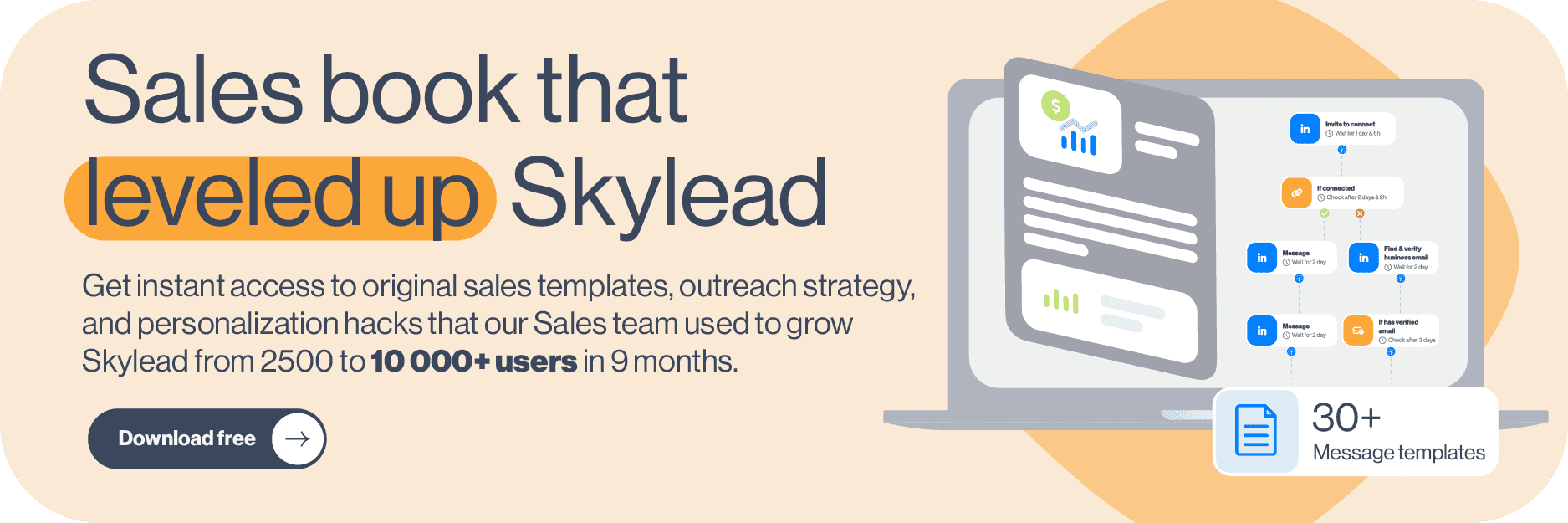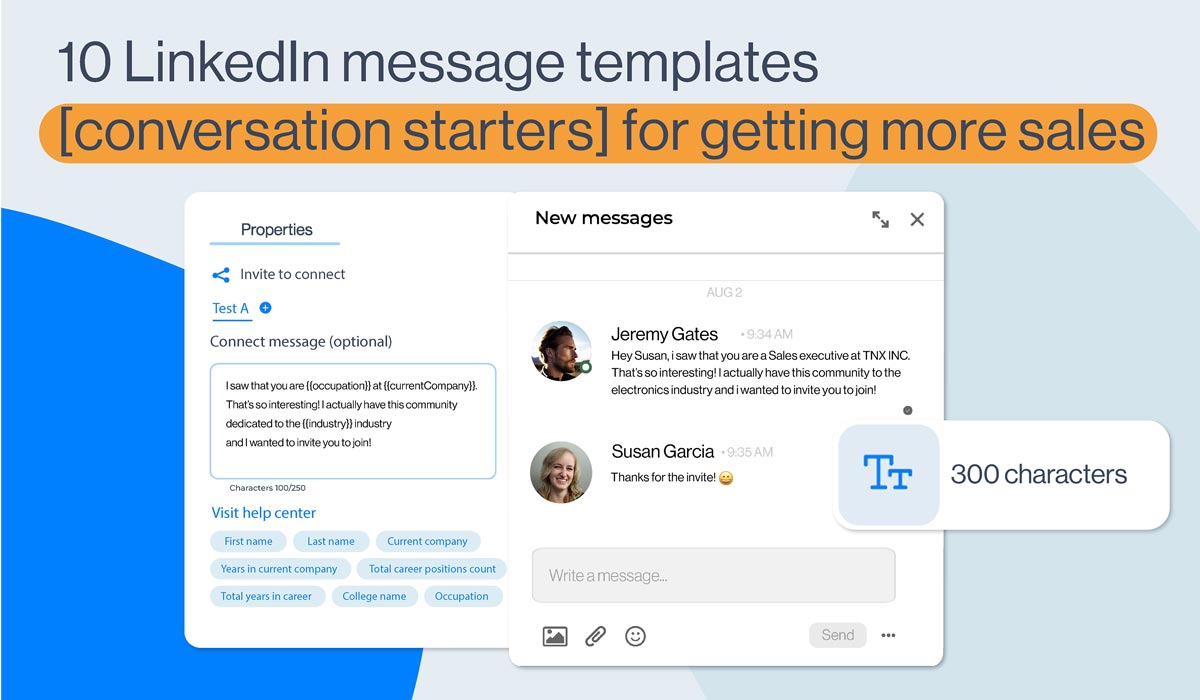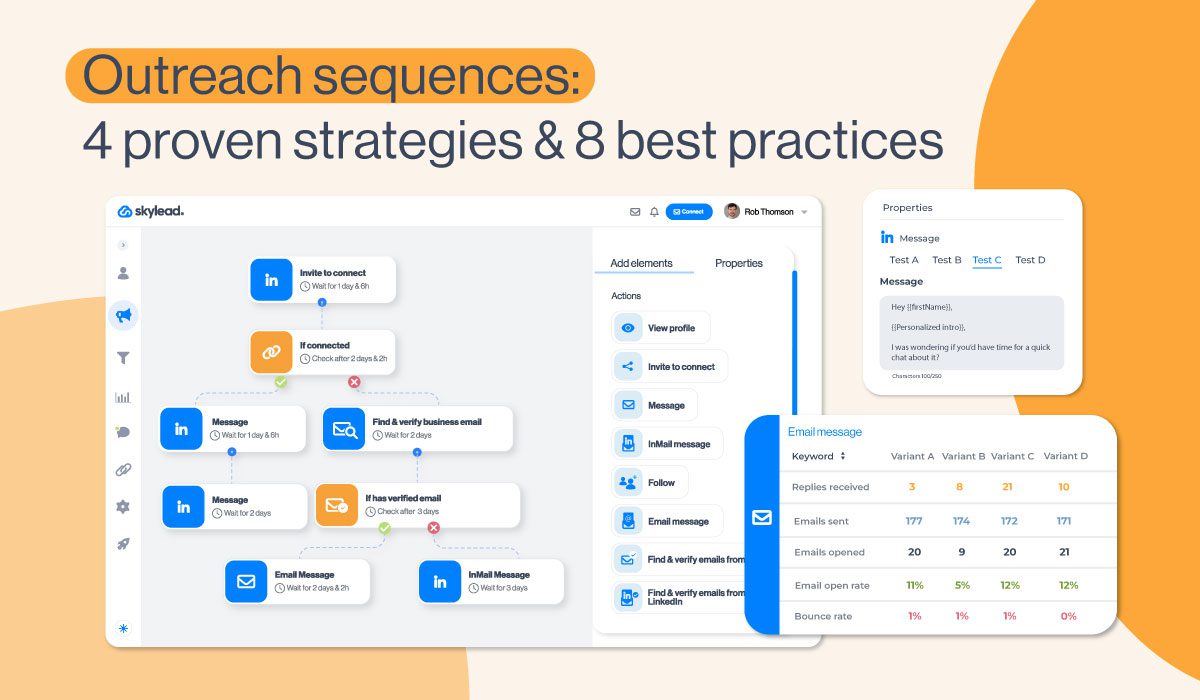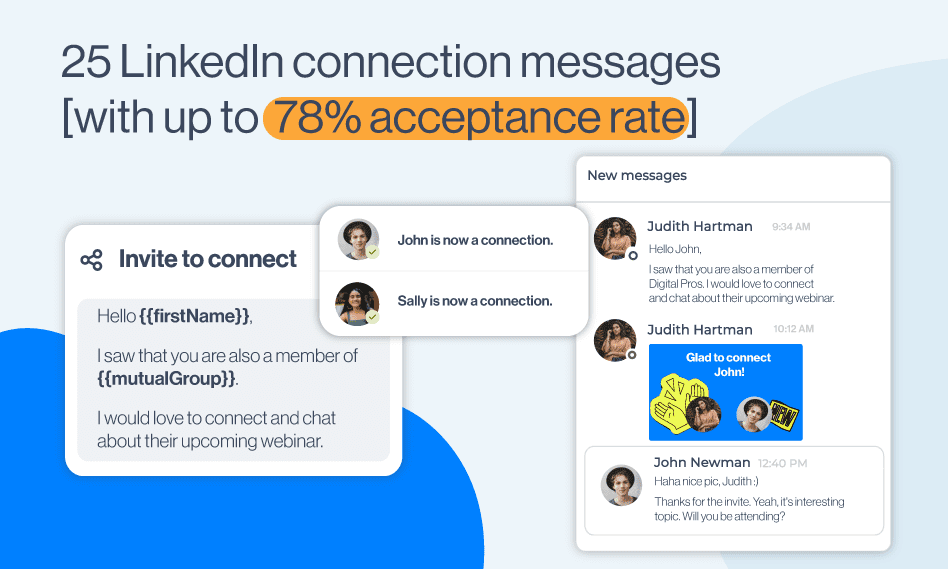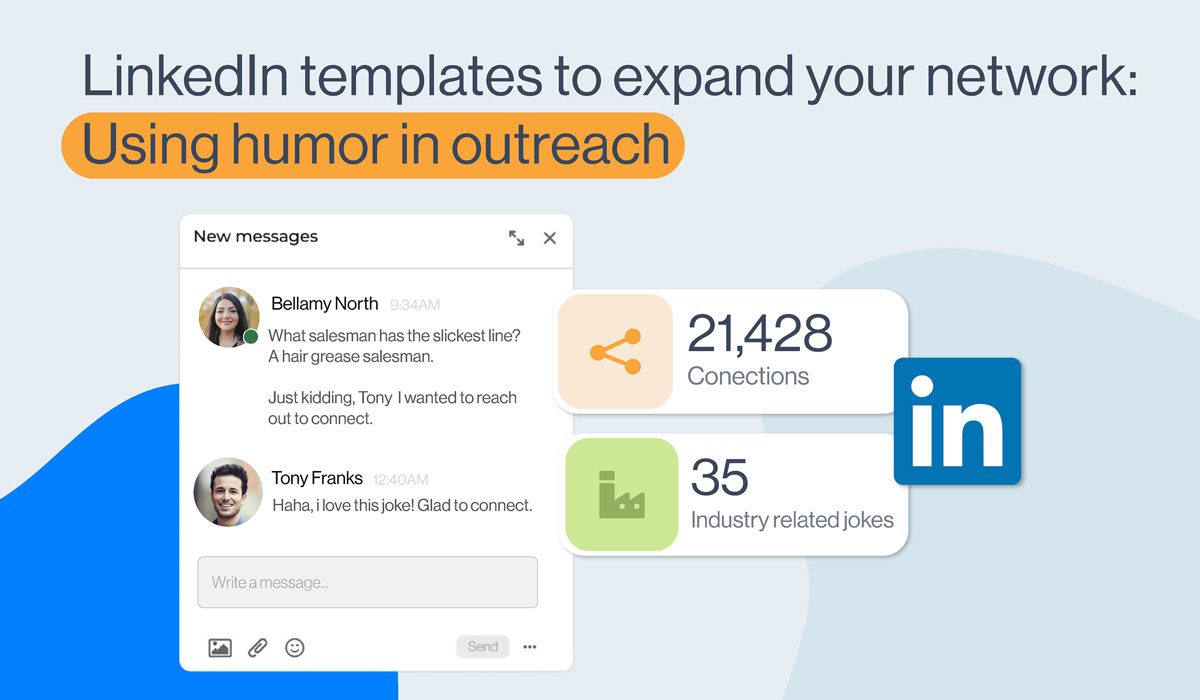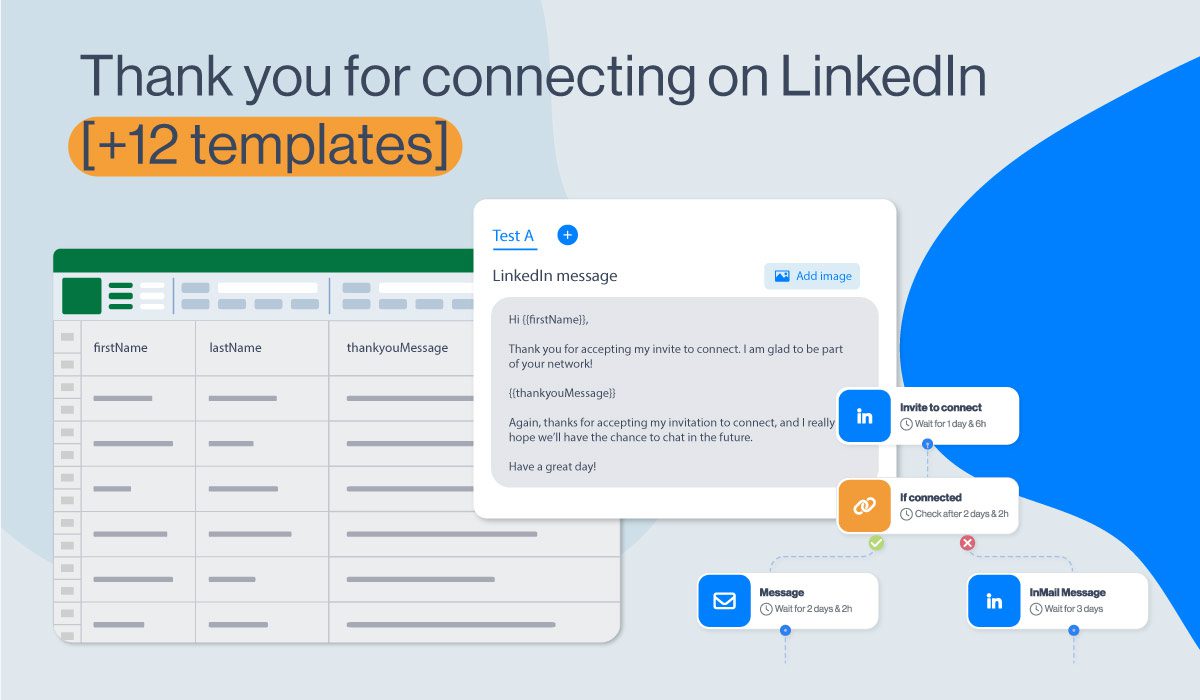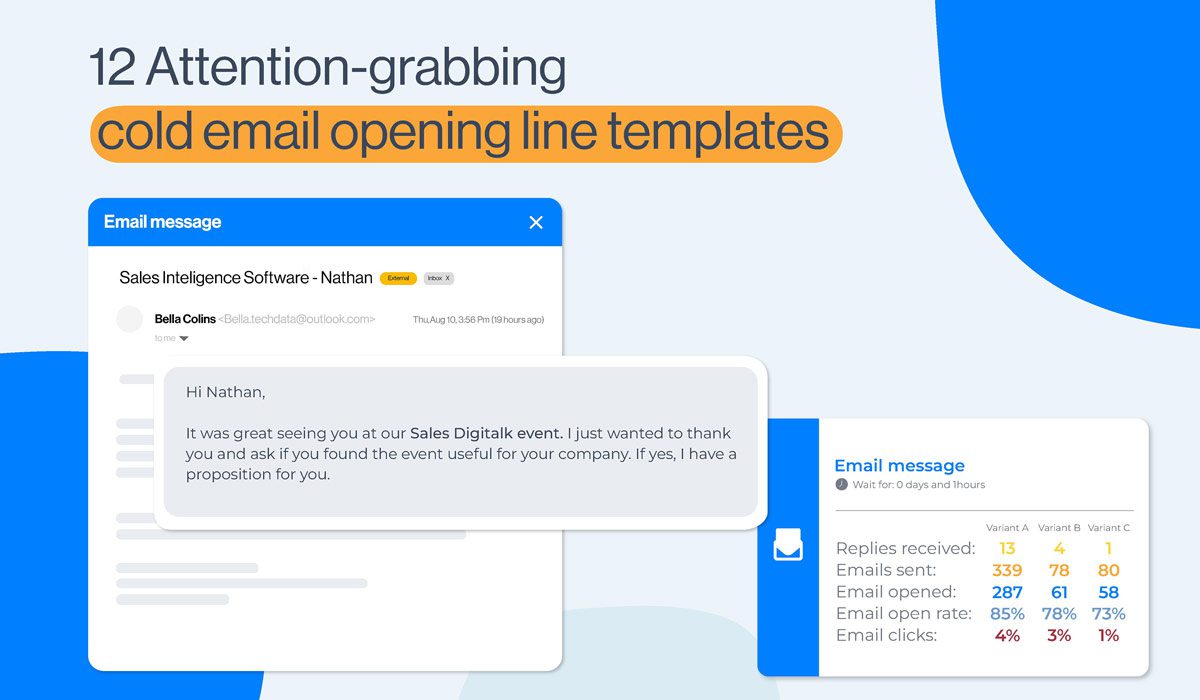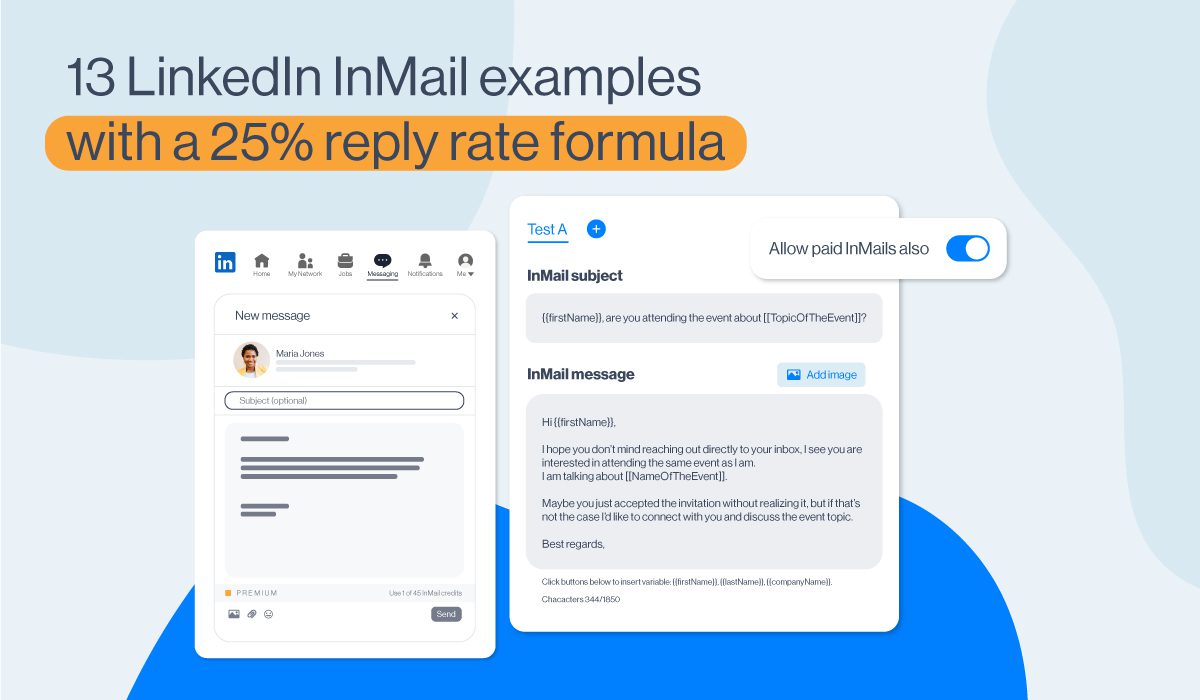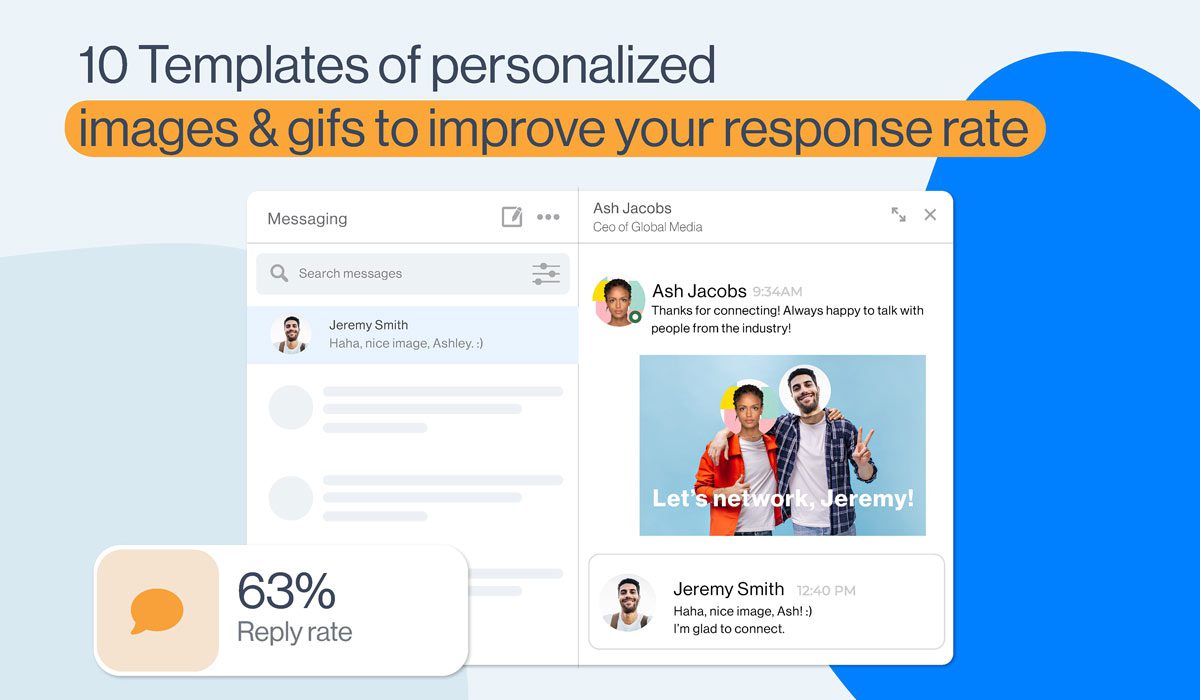How to write a follow-up email after no response [+23 examples for 2024]
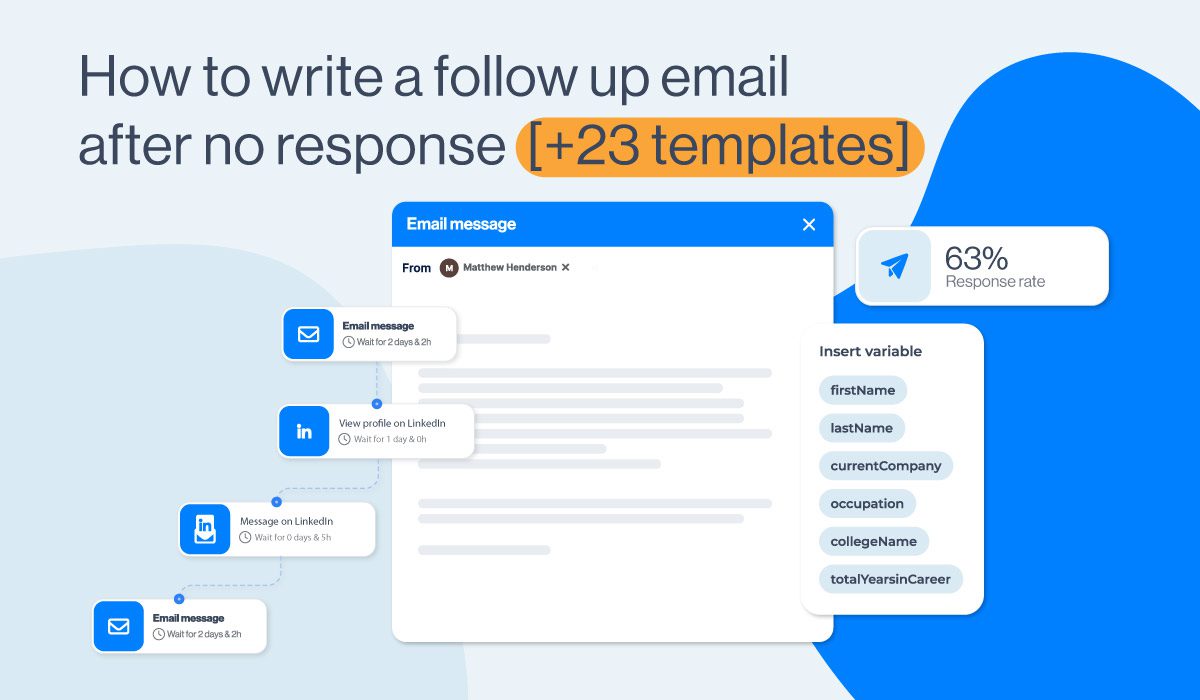
To follow up or not to follow up?
Your first email got ignored. We’re sorry to hear that. Most of the time, that will be the case, and that is why you should focus your attention on follow-up emails. But why bother?
What if we told you that by sending a single follow-up, you increase your response rate by 9-13%? And if you keep sending more follow-ups, you can increase the response rate by three times?
We’ve come to find that crafting a good follow-up can be challenging. First, you must grab your prospect’s attention and point it to your email in an overly crowded inbox. Second, you need to make sure to put the right information in all the right places. Why? Well, to get a response and, hopefully, book a call.
Sounds complicated, doesn’t it? Do not despair. We’ve got you covered! Our sales and marketing teams came together to write this article only to help you learn and explain:
- How to write a follow-up after no response;
- The dos and don'ts of follow-ups and what to avoid;
- How can follow-ups increase your response rate;
- How to use a multichannel approach for your follow-up emails;
Bonus: You also get to enjoy tested-for-efficiency follow-up email after no response templates.
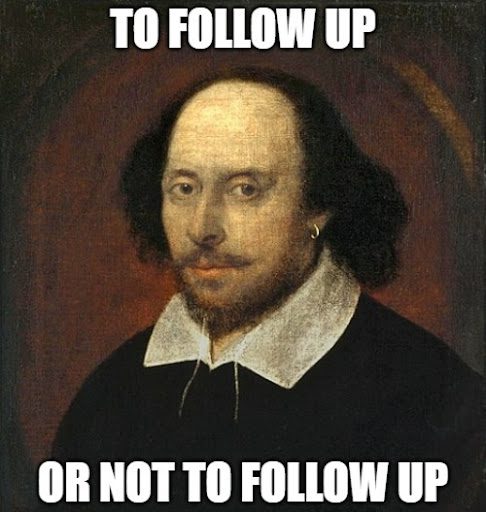
What is a follow-up email?
A follow-up email represents a message sent to a prospect you’ve already contacted before. Usually, the main intent behind a follow-up is to remind the prospect of your first email, request additional information, or remind them of an important meeting or event.
Follow-up emails are a star of the show in the B2B world, which includes sales, marketing, job hunting, recruiting, and customer communication. When it comes to sales, you can use them for lead generation, warmup, and lead management. The same goes for recruiting and job hunting, too.
Why is it important to send follow-up emails?
Always remember that there could be a number of reasons why your prospects aren’t responding after the initial email. Here are some:
- They are too busy.
- They forgot to respond.
- The message is not clear.
- They are not the decision-makers.
- They are genuinely not interested. (in this case, use objection handling to win them over)
What we can conclude from our experience and the experience of others is that sending follow-up emails pays off.
When it comes to sales, our sales team assured us that this statistic is true: sending follow-ups can increase the chances of a response by 25%. If we know that 70% of salespeople stop after one email, then you can use this info to your advantage and incorporate follow-ups into every outreach attempt.
In fact, we’ve witnessed firsthand that follow-ups are crucial for B2B sales outreach, and if you’ve done prospecting on LinkedIn right, you will have a higher chance of hitting that sales quota in no time. Just ask our sales team!
When applying for a job, sending follow-up messages after a one to two-week wait can be a professional way to further underline your interest in the position. Moreover, you’ll get to find out the stage of the hiring process. Lastly, this could encourage HR to take another look at your resume, thus possibly giving you a second shot at the job.Lastly, lead management is only done right with a handy CRM and when follow-ups are heavily involved.
When should you send a follow-up email after no response?
In sales and outbound marketing, sending cold emails creates a need for follow-ups. In outbound email marketing, you are reaching out to potential prospects for the first time without them stating their interest prior. This is why follow-up emails are necessary, but the question is when should you click send your email for the second or third time?
From our experience, picking the right time to send a follow-up email can affect the open and response rates significantly. The norm is to wait anywhere from 2-5 business days before you touch base with your prospects again. The trick is to put yourself in your prospects’ shoes - they might be busy, or they still haven’t had a chance to read or respond to your email.
Sending premature follow-ups can make your prospects lose interest and end potential communication before it even starts. For example, you can send the first follow-up after 5 days, giving them enough time to read the email. In case there’s no response after the initial wait, you send a second follow-up for a gentle bump-to-top in their inbox.
How to write and send a follow-up email after no response
Andrea, our Head of Sales, once said: “A follow-up email after no response should be powerful enough to offer the right value and inspire the desired response at the same time.” The question is, how do we deliver an email with such strength? Our sales team has the knowledge and experience, so open your notes, people. The class on “Writing and sending follow-up emails by Skylead” begins now. 👇
Subject line
Have you heard? Crafting an eye-catching subject line is directly correlated to a higher open rate. Good email subject lines and pre-header text combined are what help prospects make the decision whether or not to open and read the email. If you didn’t have a chance to catch their attention the first time around, use your follow-ups for a second chance for a first impression.
When creating compelling subject lines, our sales team recommends following these simple rules:
- Keep it short and to the point.
- Our CEO, Relja, says that catchy subject lines should be under 55-60 characters for web inboxes and under 30 characters for mobile inboxes.
- Limit punctuation marks (our research suggests that more than 3 punctuation marks may look like spam)
- Avoid all caps and exclamation points.
- Be careful with emojis (we’ve found out through testing that you should use 1 emoji at a time and that you shouldn’t replace words with emojis to avoid not being clear)
- Personalize your subject lines.
Pro tip: Always A/B test your subject lines for efficiency. From our testing, we found that a high open rate is an indicator of a good subject line. Subject line optimization based on real-time results can significantly improve your response rate over time.
Follow-up email subject line examples
For Web Inboxes (55-60 characters):
- {{firstName}}, this is your future workflow using SaaS! 🚀
- VIP sneak peek: You unlocked new features 😎
- {{firstName}} I need your advice
- {{firstName}}, let's make Q4 legendary together
- Your Q4 game-changer inside
- {{firstName}}, let's co-create magic for {{companyName}} ✨
- Tick-tock! Your Free Trial is Ending 🕰️
- Marco? Polo! Seeking Your Response
For Mobile Inboxes (under 30 characters):
- Your secret SaaS weapon 🌟
- Let’s join forces 👊
- Shortcut to {{benefit}} 🙌
- {{firstName}}, get started 🆓?
- Time to grow, {{companyName}} 🌱
- Does this work {{firstName}}?
- Supercharge your {{workflow}}! ⚡
- Missing chat: Still tuned in?
Opening
Once you’ve caught their attention, our sales account executive, Pavle, says that how you greet them is what determines whether they’ll keep on reading. Avoid intros like “Just checking in to see if you’ve read my last email” or “I’m just following up on my previous email.” Such intros are overused and could imply blaming the prospect for not responding, which is a big no-no in sales communication. Instead, say something like this:
- I know we’ve talked about {{painPoint}}...
- As we quite recently connected, I thought it’s only fair you know something about me as well…
- Hi {{firstName}}! I can’t believe how time has flown by since the last time we spoke. I just saw your post on {{topic}} and thought it was amazing. Anyway…
Let’s review the follow-up email after no response opening rules:
- Start with a friendly greeting.
- Briefly remind the prospect of your original email by restarting the conversation (like in the examples above)
- Clearly state the purpose of your follow-up.
- Don’t be afraid to get creative and use humor in outreach.
Bonus hack: Personalize intros - by adding some personal information about your prospect, you show them general interest and that you’ve done your homework. People want to feel special, so be sure to go that extra mile to show them that they are not just another prospect to you.
Our sales team tested our hyper-personalized sequences, and the results show that the response rate increased from the industry standard of 8.5% to a staggering 35%.
Follow-up email opening examples
- Hey {{firstName}}!
Between caffeine doses and back-to-back meetings, my previous email about {{ToolName}} might've slipped through. Thought I'd pop back into your inbox. How does it look from your end?
- Morning {{firstName}}!
Did my last email decide to play hide and seek in your inbox? 😅 I chatted about some exciting rates and am curious to hear your thoughts.
- Hello {{firstName}},
Knowing how swamped we can get, I figured I'd circle back. Our conversation about a possible partnership had me excited. Where do you stand on it?
- Hi {{firstName}},
Last time, I dropped a hint about {{ToolName}}'s shiny new feature. Just like waiting for the kettle to boil, I'm here, curious: Any thoughts brewing on your side?
Still having trouble with your email opening lines? Try reading our guide to attention-grabbing cold email opening lines. Don’t skip out on the templates!
Body
We’ve covered the follow-up email openings after no response. Now, let’s dive into our sales team's tricks of writing a great email body:
- Be concise - clearly written emails win over prospects.
- Keep it short - from our experience, longer emails could negatively affect the response rate.
- Be specific - no need for filler phrases and words.
- Be polite and professional - People value manners, and if you’re not being too aggressive, you might get a chance to pitch.
- Offer value - People want to see the value behind your offer. If you’ve done your prospecting well, you’ve caught some people who can largely benefit from what you’re selling. Be sure to add some extra value by underlining some known issues that your tool/product/service fixes for them or by sending educational content.
Our pro tip: “Do not think of each follow-up as spam. Think of them as added value with each new message you send.”
Closing & call to action
Our sales team says that when you write a closing and a final CTA, you need to create a perfect environment for your prospect to respond. That means:
- No vague statements - Do not confuse your leads with overly complicated demands at the end of the email.
- A clear and short call to action - Sales experts agree that a good CTA is the last thing your prospects read and the first thing they do.
Follow-up email closing examples
- How about next week? Does Wednesday at 11 PM work for you?
- Dive into the feature's details by hitting reply.
- Plot our next collaboration chapter? Choose your preferred time here.
- Respond with "Let’s do this," and I’ll send more educational content your way.
Still feel like you need some help with your CTAs? Check out our guide on creating a powerful sales email call to action in sales emails, and don’t skip the CTA examples part!
Using automation tools to send follow-up emails
Now that we’ve covered crafting follow-up emails after no response, let’s look at the next step - sending follow-up emails. Outreach emails might be hard to track, especially if you have a lot of prospects in your inbox. Plus, keeping track of the number of follow-ups sent, the context, and the goals for each specific lead can be challenging.
Now, before your outreach turns into a huge mess, you should ask for some help. And you know what? It sounds like what you need, dear salesperson, is LinkedIn automation and cold email software for lead organization and follow-up email sequences.
Let’s look at the numbers one more time. Andrea says that from our experience, the first and the last follow-ups get the most attention:
- with the first follow-up, the response rate increases by 43%
- the last follow-up - “breakup email” receives a 53% response rate
That’s a lot of follow-ups to keep track of. However, by using automation and email message sequencing, you can rest assured that all your messages are being delivered in a particular order. Now, your question is: where can I find such a platform or tool? 🤖

How to do it?
This is where we come in, with a big grand entrance, only to introduce Skylead and our all-star, first-to-market feature Smart Sequences. With the help of our Smart sequences, you can use multichannel outreach messaging and personalization to supercharge your sales efforts! Smart sequences are algorithms that allow you to combine if/else conditions with outreach actions. This way, you can create scenarios based on your prospects’ behavior, ensuring you get a response from them one way or the other.
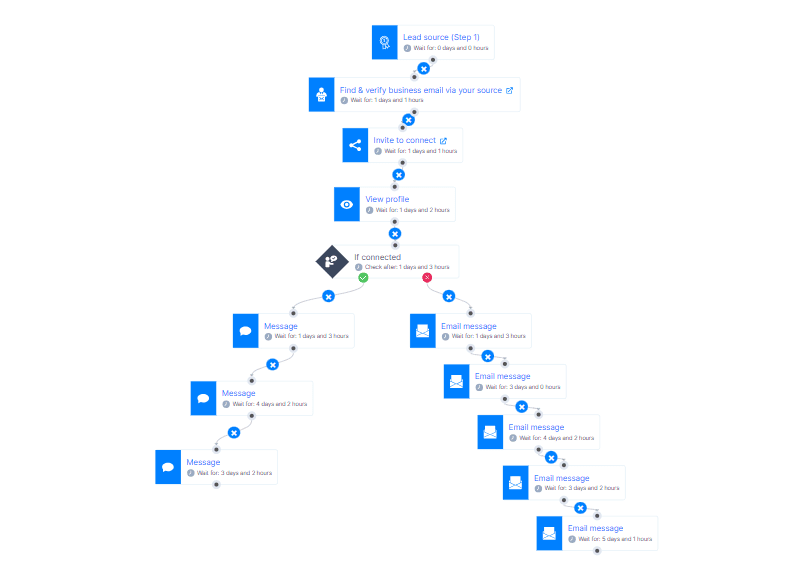
Use Skylead to:
- Create smart message sequences
- Add hyper-personalized elements such as dynamic text or images & GIFs
- Use LinkedIn as an additional channel and explore multichannel outreach
- A/B test your content, analyze and optimize campaigns
- Keep track of each follow-up in the Smart inbox and label leads that require additional follow-ups.
Apart from follow-up message sequences for sales, marketers can also benefit from our tool. By using marketing automation, you can get more web traffic, drive conversions, collect event attendees, and raise brand awareness.
Either way, using SaaS tools or doing the work manually, you can organize your follow-up emails after no response in a sequence and incorporate a multichannel outreach. In Skylead, setting your follow-ups in a sequence is as easy as 1,2,3, and the sending process itself is done for you. Let’s show you a simple, multichannel sequence in Skylead if the lead didn’t respond.
Example of a follow-up sequence when you are connected with the lead on LinkedIn:
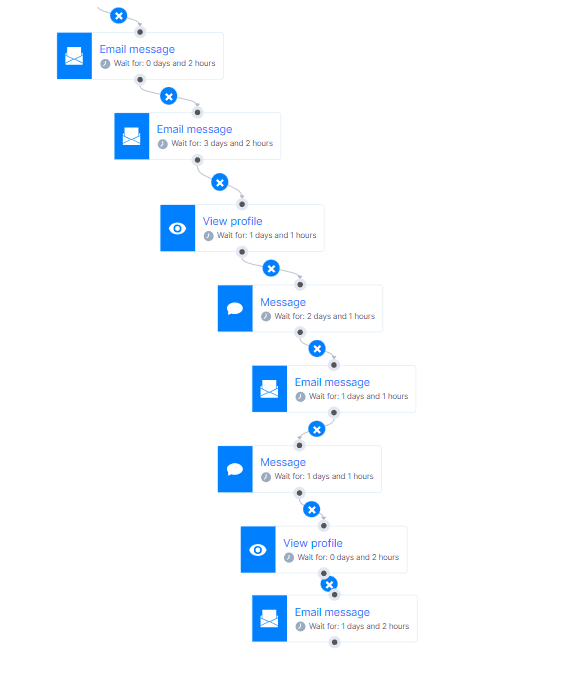
Why it works
Setting up your sequence to include an outreach channel other than email works best, as it shows your prospects that you care about making a connection with them, and they are more likely to respond to you.
Furthermore, in this sequence, LinkedIn acts as a powerful and supportive lead generation tool, as you can interact more with your prospects and increase the chances of them seeing your message and responding. Just make sure to prepare your messages for the outreach carefully.
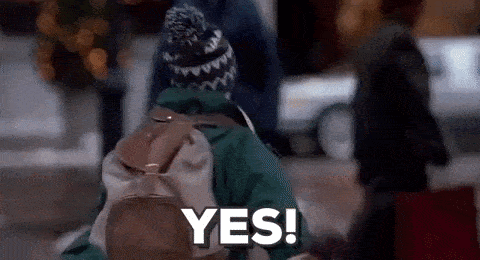
But how do you write them? Well, the next chapter is where we unveil the tips and tricks, so keep reading to find out. 🙌
Tips for writing effective follow-up emails
Our sales force, Andrea and Pavle, are back to help you by spreading their knowledge and gifting you with more tips on how to write effective follow-up email copy. Keep this in mind: hard work does not stop at the first email - it continues and increases. First off, let’s look at the do’s.
Start with a strong opening.
A strong opening is like a good first impression. Well, in this case, it's a second first impression, so make sure to avoid overused phrases and email cliches at all costs.
Use storytelling in the follow-up sequence
There are many approaches you can take with your sequence strategies, and one of them is storytelling. For example, you could invite them for an online coffee, and the entire sequence can have a coffee conversation theme.
The idea is to reveal one value to the pain point at the time in every following email, enhancing its value as you go. You can speak about the value in ascending order of importance, with each email being more important than the last.
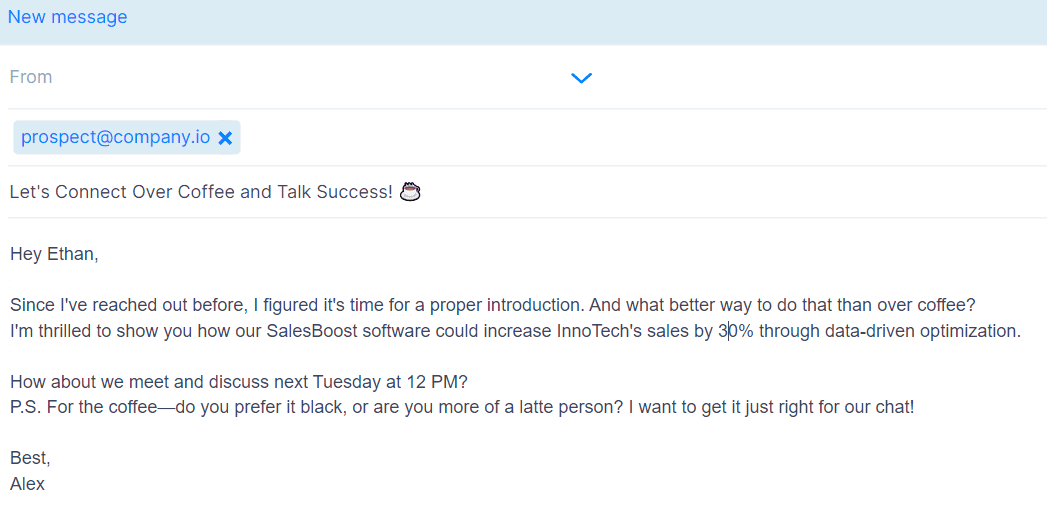
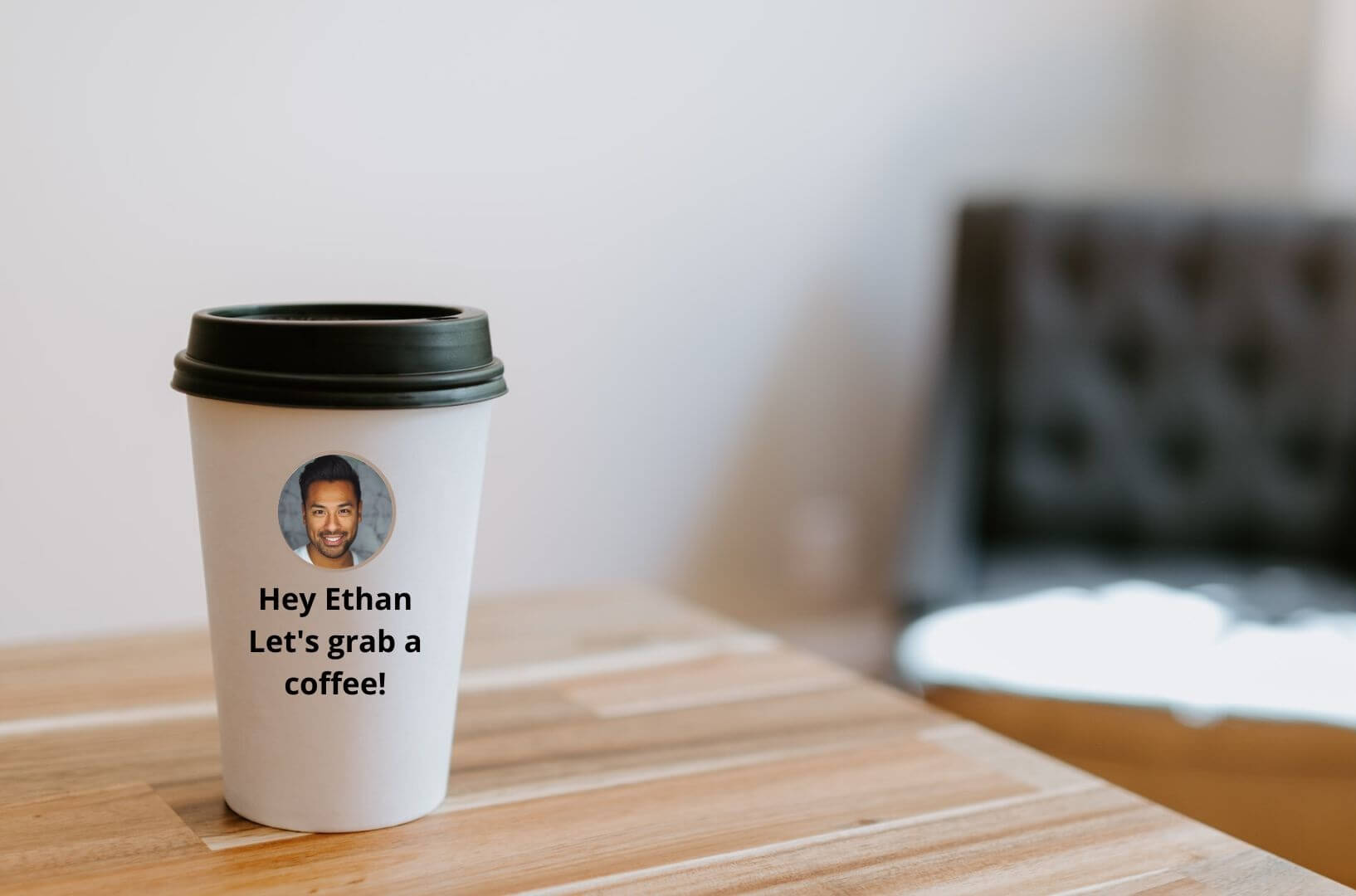
Personalize your follow-up emails whenever possible.
Personalization shows you’ve made an effort to get to know your leads. And despite the fact that you’re reaching a certain target group, it doesn’t have to seem automated. You can use Skylead and our image & GIF personalization feature to add some sparkle to your follow-ups. You can also add dynamic text to follow-ups to increase the level of personalization in outreach.
Get to the point quickly.
From what we’ve seen and from what you can tell from your own experience as an email reader, losing your prospect's attention is easy. It only takes a few mistakes, and your email is done for. Avoid all this by getting to the point quickly. No long sentences, no short novels, just facts and a little bit of creativity to keep them reading and ultimately doing the CTA.
Space out your follow-up emails.
If you’re being too salesy and aggressive, you’ll lose a good portion of your prospects. No one wants to be bothered, especially in the case of cold outreach. Make sure to space out your follow-ups anywhere from the standard 2 to 5 business days.
Pro tip from Skylead’s sales team: Give your prospects enough time to respond. Some of them might be too busy to go through your emails and have not had a chance to read them yet. Sending too many follow-ups after no response doesn’t seem like a friendly reminder or check-in but rather a pushy salesman trying to shove their product/service down their prospect’s throat.
Show credibility.
Cold outreach can be tricky. It’s hard enough you’re trying to establish contact out of the blue, but you’re also asking for something. Prospects are usually not so trustworthy with cold emails, so in order to show them that you’re serious, you need to show credibility.
We’ve mentioned that every follow-up email should add extra value. Use each follow-up to show them your accomplishments - link to credible sources, testimonials, and case studies that can help them decide whether or not to trust you.
Offer value.
Your prospect’s first thoughts are usually, “Why is this person contacting me?” or “What is this person trying to sell?”. By following our rules of writing follow-up emails after no response from the section above, you’ll lead them straight to the point with your follow-up email, underlining the value of your product or service.
Throw some numbers around. People respond to numbers and statistics well. Prospects appreciate value, and if you offer them a solution to a niche problem, the conversation will just keep flowing.
Be empathic.
Another pro tip from our sales team: You need to listen to your prospects carefully and truly understand their issues. If you know they have a problem your product can fix, try approaching them in a subtle way where you show them compassion. Once you get a reply, your work doesn’t end.
Create urgency.
You can probably guess that creating urgency is what makes your prospect believe he should take immediate action by replying to your message. However, if it did not work for the first time, you can create more urgency in your follow-up, but be subtle.
Our pro tip: Don’t use sensational subject lines and promises you can’t keep only to lure them into replying.
Common mistakes to avoid
Andrea and Pavle are full of knowledge when it comes to the dos of sending follow-ups after no response, but after years of sales experience, they can also easily spot cold email mistakes. The list below shows what you shouldn’t do if you want a high reply rate with your follow-up email sequence. 👇
Following up too quickly.
One of the main rules of cold outreach is not to spam your prospects with messages! Be patient. Nobody likes an overly aggressive approach. The industry standard is to spread your follow-ups out by roughly 2 to 5 days. If you wait for more than that, it will probably reduce your chances of getting a reply.
It’s a good idea to map out your follow-ups inside your Smart sequence in the correct order and wait for a reply. You can thank us later.
Sending too many or not enough follow-up emails.
What is the optimal number of follow-up emails you can send to a prospect before that final “breakup” email? We know for sure that sending just one email isn’t enough. So, we take into account that by sending each follow-up after no response, you increase your chances of a reply. That said, it’s safe to say somewhere around 3-6 follow-ups is enough.
From our own experience, a prospect says “no” 4 times before saying “yes.” That’s why this range works perfectly and might get you that desired result.
Being too pushy or aggressive.
We’ve mentioned this before - people do not respond well to aggressive salesmen and aggressive job seekers. Being direct and pushy are not synonyms. It’s one thing to show prospects or employers your interest in them, but another to demand and be borderline rude about your approach. It’s all about setting a fine line between being subtle yet decisive and direct. You can sell without sounding too salesy.
Missing important information.
You’ve probably received an email that’s missing crucial information in the past. Heck, we all did at some point. Sometimes, the email is very catchy and inspires immediate action, but wait. Parts of it are missing. It could be a missing attachment, a link, or some other information. That means you’re creating an additional step for the prospect. They will have to ask you for that information, but as you know, most of them won’t. The lack of crucial or promised information can be very offputting to prospects, so make sure to double-check if all the info is in each follow-up.
Not proofreading.
This one is tied closely to the previous advice. We’ve noticed that mistakes are not tolerated by prospects, so make sure to go through your follow-up sequence and maybe get a second pair of eyes on it. Mistakes show sloppiness and a lack of interest in the prospect. Plus, they can also be perceived as spam.
Check for typos and grammar, and if all attachments and visuals are there, along with all the necessary information, then you can click send.
Writing too much text.
If the email body is too long, your prospect won’t read it. It’s that simple. Our sales team has tested longer and shorter versions of the same follow-up sequence and saw significant differences. Shorter emails have received a higher response rate.
Not having a clear call to action (or too many of them)
Our head of sales, Andrea, always reminds us that you have your prospects’ attention for a very short time. Make sure to have only one and a clear call to action. Otherwise, you’ll lose their attention quickly, and you won’t get the desired action from them.
Not offering an unsubscribe option.
Given the fact that you’re contacting these people without their consent, some of them might feel the urge to unsubscribe (hopefully not if you’ve done your prospecting right). Nonetheless, adding an unsubscribe option is good manners. Plus, you’re helping deliverability, reducing spam rates, and improving your reputation. You want active users/subscribers in your email lists, so adding an unsubscribe option is how you help yourself.
Sending emails to the wrong person.
This is a part where we talk a little bit about prospecting. Knowing your product/service is where you begin before you think about your audience. Thought about it? Good. Now it’s time for prospecting. However, if you have trouble with this step, here is a guide to the best LinkedIn prospecting strategies so you can get to the right person every time.
Skylead tip: If you’re sending emails manually, make sure to spell their name correctly.
Sending a follow-up email after no response samples & templates
We’ve come to the part of the article where our sales and marketing teams put their knowledge to the test. Get ready for follow-up email examples after no response (salespeople, recruiters, and job seekers, take notes!). Feel free to use them and test their efficiency yourself. 🤓

#1 Reminder email after no response (first follow-up)
Subject: Tap Tap: Is This Thing On? 🎤
Hey {{firstName}},
Sending a cheerful nudge your way! Seems like our chat about {{topic/Issue}} decided to take a little vacation. Ready to welcome it back whenever you are.
Eager for the sequel to our chat,
{{yourName}}
Real-life example:
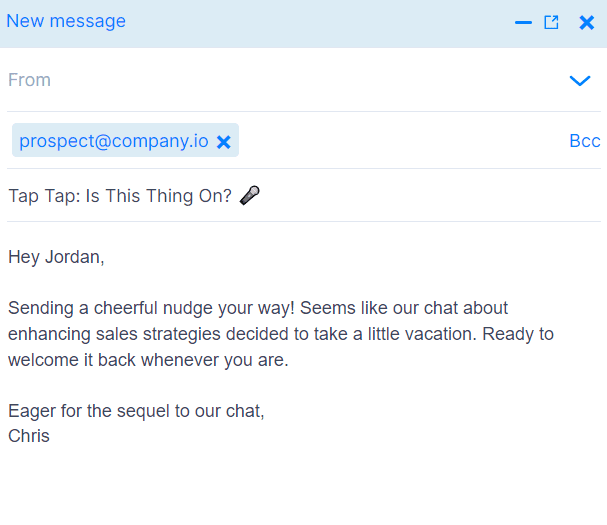
Why it works: One of the major rules of writing follow-ups is not to be afraid to have fun. Being humorous is something that most people respond to well.
#2 Reminder email after no response (second follow-up)
Subject: RE: Mic Check for Round Two? 🎤
Hey {{firstName}},
It looks like we keep missing each other over and over again. I know things get busy, but I believe that a productive exchange is worth every second!
How’s {{date/Time}} for an encore of our previous productive chat?
Real-life example:
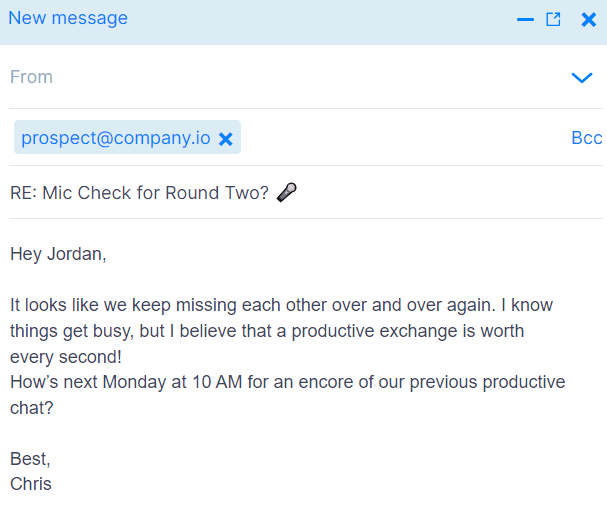
Why it works: In the second follow-up, you are showing your prospect that you are consistent. It’s short, and it shows your outreach efforts clearly.
#3 Follow up sales email after no response
Subject: Green, Yellow, or Red for {{product/Service}}? 🚦
Hi {{firstName}},
Our chat from last week about {{product/Service}} seems to be idling at a traffic light. Which color are we on?
If you're stuck at yellow, need more green insights, or hitting red, I'm all ears.
To clear signals,
{{yourName}}
Real-life example:
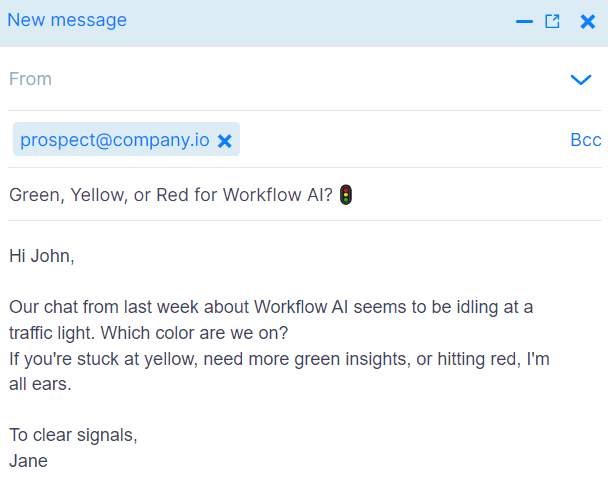
Why it works: Avoiding boring lines and overused sentences is crucial for any outreach email. Plus, this one shows you got inspired and took the time to write a creative follow-up with a witty comparison.
#4 Follow-up email after no response (formal)
Subject: Revisiting Our Lost Thread
Hi {{firstName}},
The daily email cluster must have pushed our thread regarding {{topic/Issue}} down the inbox black hole. This note is a gentle nudge, hoping to push our conversation back to your attention.
Eagerly waiting for your reply.
Best,
{{yourName}}
Real-life example:
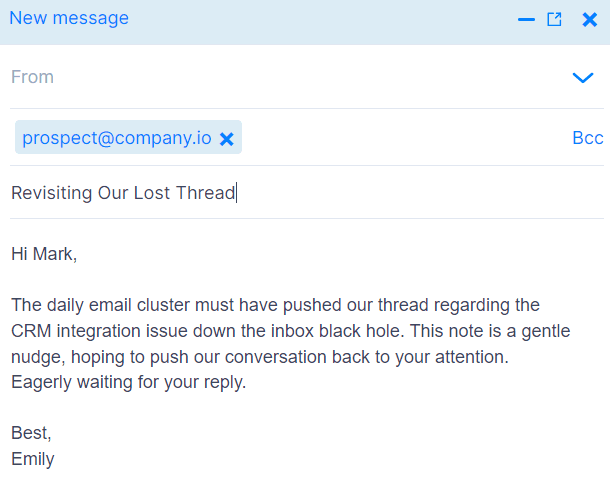
Why it works: Although most business communication nowadays tries to steer clear from generic and cliched email communication, being formal has nothing to do with that. This follow-up email shows that you’re polite and well-mannered but also clear with your intentions.
#5 How to bump an email politely
Subject: An Elevator Pitch: Bringing Our Chat Up Again
Hi {{firstName}},
In the vast sea of daily emails, I’m sending this note as a gentle elevator, hoping to lift our previous discussion on {{topic/Issue}} back in focus.
Looking forward to your insights!
Ready for your reply,
{{yourName}}
Real-life example:
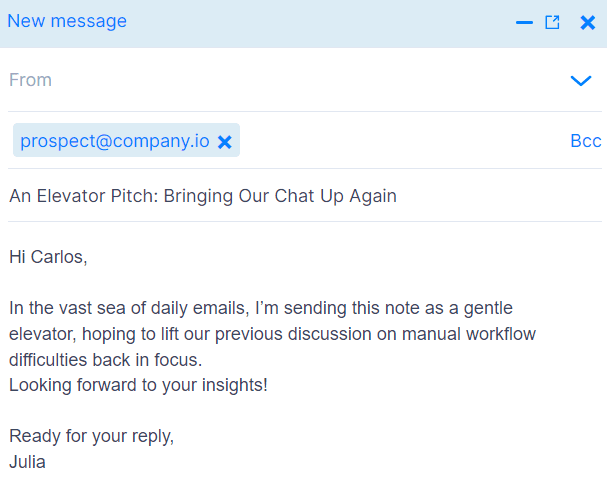
Why it works: Your email got lost in the daily bunch. How to get it back into the limelight? By sending a polite follow-up email and replying to your primary thread and stating your purpose once more. This one works because it’s a creative way of showing the recipient that you demand their attention.
#6 Follow-up email after no response from a client (sales)
Subject: Piecing Together Our {{product/Service}} Puzzle 🧩
Hi {{clientName}},
Seems our dialogue on {product/Service}} took a quiet turn. Are there missing pieces I can help with?
If adjustments or additional support is needed, I'm ready to jump in. Just give me a sign.
Awaiting your cue,
{{yourName}}
Real-life example:
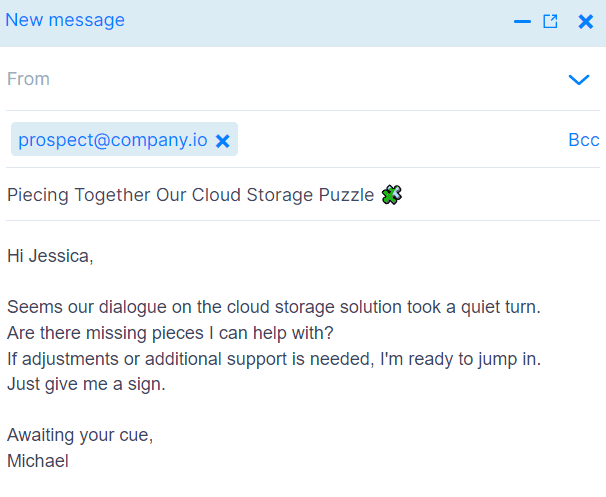
Why it works: Offering your help and support is sometimes just what a client needs to clear their confusion. This is not a potential client but a doubtful client. If the client is doubtful, you could lose the account, so make sure to follow up frequently and gently.
#7 Follow-up email after sending resources (sales)
Subject: Resource Roundup: Hit or Miss? 📚
Hey {{firstName}},
Dived into the resources yet? Would love to know if anything clicked or raised an eyebrow about {{product/Service}}.
Got any questions or an 'aha' moment to share? I’m just a call away: {{yourPhoneNumber}}.
Warmly
{{yourName}}
Real-life example:
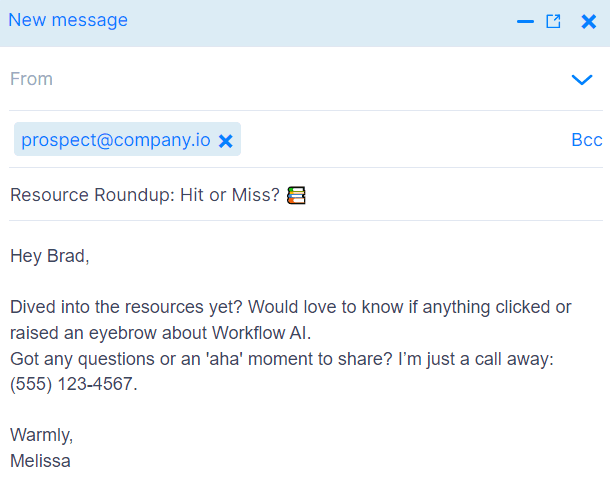
Why it works: Gentle reminders in email form are much needed in the cold outreach game. This template is not aggressive, has a friendly note, and just the right amount of pressure on your end.
#8 Follow-up email before free trial (sales)
Subject line: Dropping A Quick Present 🎁
Hey {{firstName}},
Just wanted to say thanks again for the call. As we talked about {{painPoint}} and explored your company's current strategies for dealing with it, my belief was reinforced that {{yourProduct}} can help with achieving {{metricValue}}.
That’s why I included a little gift for you: {{giftRegardingFreeTrial}}, so you can fully try our product out and experience {{MetricValue}} firsthand.
Let me know when you start the Free Trial so I can send it to you.
Cheers,
{{yourName}}
Real-life example:

Why it works: This is a short, precise email that the prospect doesn’t waste time reading. With exact value and a gift to top it off, which everyone likes to get, you will be sure to get a high response rate.
#9 Follow-up email after demo (sales)
Subject: Post-Demo Checkup 🧐
{{Date}} was not just another crossed-out meeting. Let’s recap:
{{yourProduct}}: Not just a tool, but a {{benefit}}.
{{theirChallenge}}: On our radar now.
If you’re wondering what's next, have any doubts, or need more details, let’s discuss.
How about a second quick chat on {{date/Time}}?
To making ‘just another day’ count!
{{yourName}}
Real-life example:
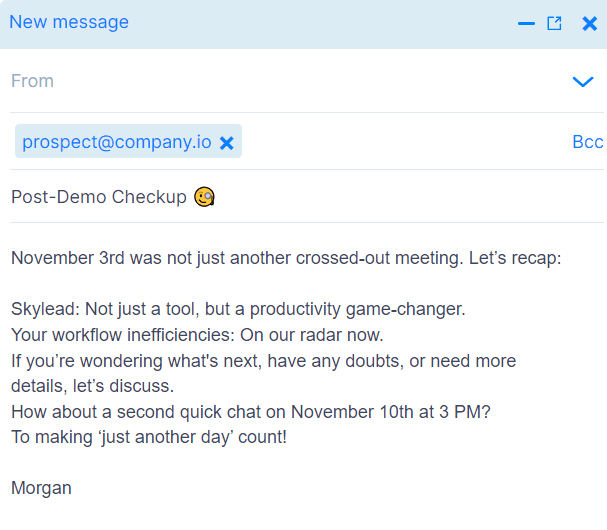
Why it works: Checking in with your prospect after a demo is just as important as the demo itself. Demos can be confusing for some, and not everyone is prepared to process all the given information. This is your chance to remind them that you can clear any confusion they may have and ultimately lead them to the next step - conversion.
#10 Follow-up email after a missed call (sales)
Subject: Call Missed: Ready for Redial? 🤙
Hi {{firstName}},
Seems our phone lines played hide and seek earlier when I called about {{product/Service}}.
Let's hit redial and aim for a good connection. How does {{suggest a specific day/time}} work for a quick chat? Or simply shoot me a time that works for you.
Cheers,
{{yourName}}
Real-life example:
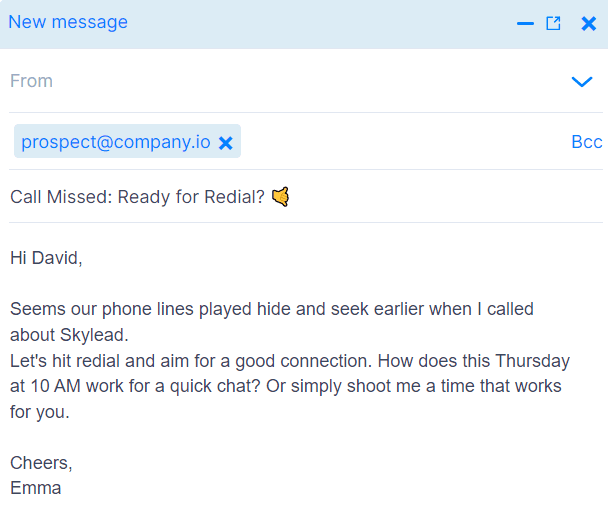
Why it works: Missed calls and meetings happen all the time. This is where this template comes in handy. It’s short and direct but has that tiny bit of informality that you need to get another chance at an online encounter. Remember: sales follow-ups are important!
#11 Follow-up email that mentions the competition (sales)
Subject line: Wish to know the truth about {{competitorName}}? 🤫
“You can’t handle the truth!” said Jack Nicholson.
Just kidding, {{firstName}}.
Hope you are doing well. Just thought of knocking on your door and leaving a comparison page - {{yourProductName}} vs {{competitorProductName}} since I know you’ve been testing them as well.
Are you up for a quick chat to discuss the main differences and the benefits I sent previously?
Cheers,
{{yourName}}
Real-life example:
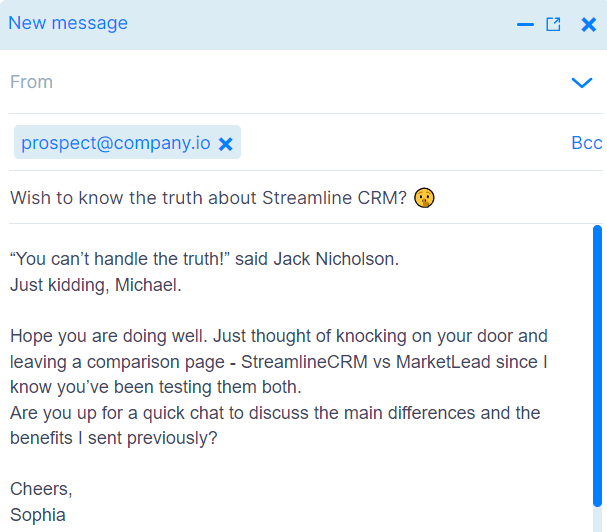
Why it works: In case you already sent your prospect benefits and your prospect has been considering your competitor as well, this is the second follow-up email you send. Show them your benefits before they make a decision and run over to your competitors.
#12 Personalized follow-up email after no response (sales)
Subject line: Tailor-made strategy for {{company}}🧵
Hey {{firstName}},
{{painPoint}} must be tedious for you. Luckily, you are not alone in this.
Since my last email, I have created a couple of strategies tailor-made for your company on how you can {{result}}. Want to hear them?
If so, does {{date/Time}} work for you?
Real-life example:
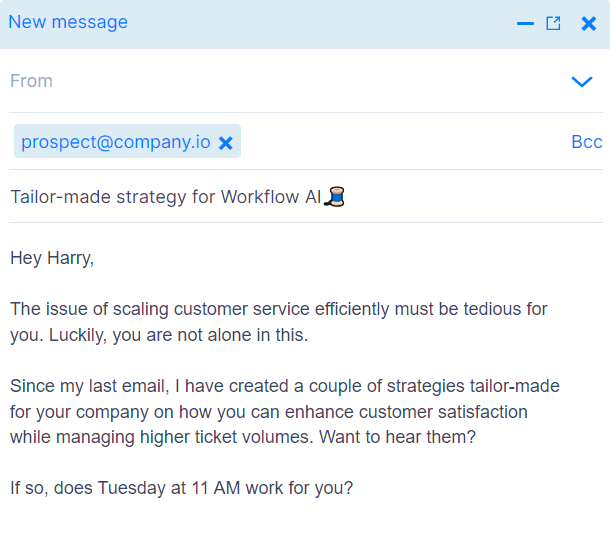
Why it works: Adding personalization, such as name, image, or pain point, achieves the best results. However, if you have a low-buying-intent prospect who didn’t respond to your email, you need to go the extra mile. In other words, you need to create something applicable and tailor-made for their company to warm them up to your product.
#13 Follow-up email after sending a contract (sales)
Subject: Contract Follow-Up: Let’s Turn Pages Into Progress 📑
Hey {{firstName}},
The contract for {{product/Service}} is now on your desk. Peeked inside yet?
If any question marks or clarifications are needed, I’m just a call away. Contact me at {{yourPhoneNumber}}.
To turning pages,
{{yourName}}
Real-life example:
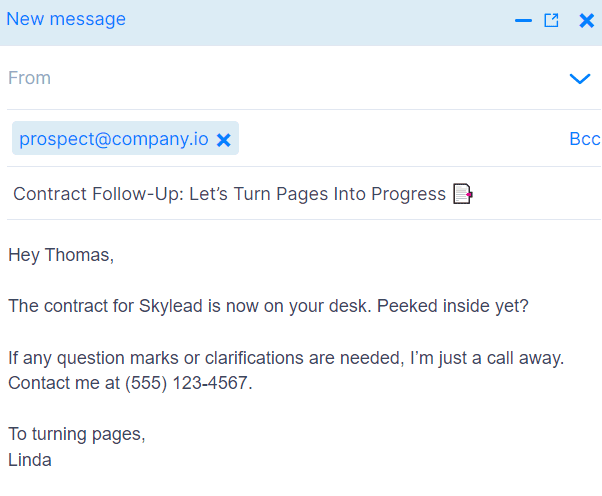
Why it works: After writing thousands of emails, we can say that finding the right balance between formal and informal communication is the key to success. Being too stiff and talking in a manner that wouldn’t reflect a live conversation is outdated. When writing, think about what you would say if your prospect were sitting in front of you.
#14 Follow-up email after a couple of months (sales)
Subject line: Hello from the other side - With exciting news 🗣
Hi {{firstName}},
I haven’t called a thousand times, as Adele, but as promised, I am checking in after a while.
How have you been? How did {{reasonForReachingOutLater}} go?
I have super exciting news to share with you. We have just {{companyNews}}. I thought you might like it as it can help you {{achieveResult}}.
Let me know if you are available for a quick call to catch up on everything that has been going on. Here is my calendar link.
Looking forward to hearing from you,
{{yourName}}
Real-life example:

Why it works: In case you haven’t had communication with your prospect for a while, you can send this or a similar follow-up. For example, the lead might have told you to reach out in the future. When you asked when exactly, they didn’t respond. The good practice here is to reach out after a month and check-in. They might be more open to hear what you have to say and offer.
#15 Follow-up email after a LinkedIn connection request
Subject line: Bridging Barriers: From LinkedIn to Real Talk 🌉
Hi {{firstName}},
It seems we missed each other on LinkedIn, so I’m reaching out via email. Your stance on {{topic/IndustryTrend}} is a real conversation starter, and it works!
I believe there’s a bridge to be built here and a productive conversation to be had. How about we put words into action? Is {{time/Date}} okay for you?
Looking forward,
{{yourName}}
Real-life example:
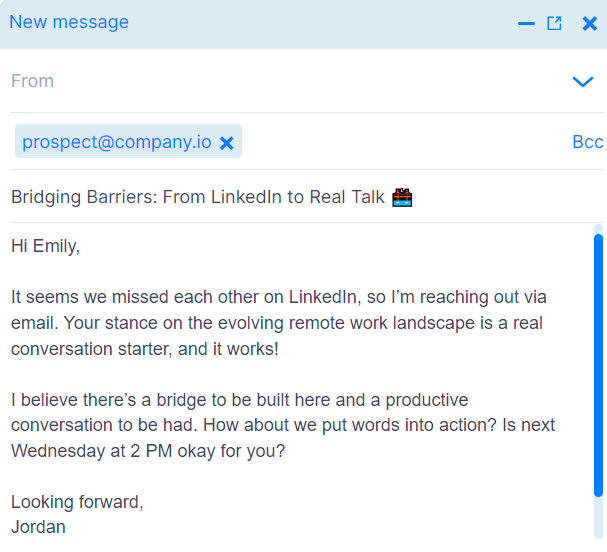
Why it works: Use a follow-up email to reach out to a member of the LinkedIn community that you tried contacting by sending a connection request, but the prospect hasn’t accepted it yet. Having another conversation channel and putting an effort into starting a conversation there is what your prospect might perceive as determination.
Remember: putting a smile on your prospect’s face is one last step before a reply happens.
#16 Follow-up email after sending a quote (sales)
Subject: Quote Mission: Countdown to Decision? 🚀
Hey {{firstName}},
Hope the quote for {{product/Service}} landed well. Any thoughts or roadblocks?
Let’s not leave things hanging. A quick call might clear it up: {{phoneNumber}}.
Waiting for your signal,
{{yourName}}
Real-life example:
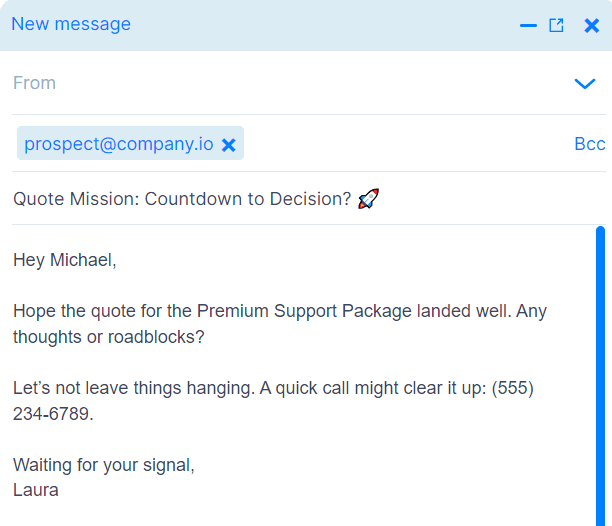
Why it works: The email is short, precise, and with a touch of spice. Just the way your prospects like them. Not being generic goes a long way in cold outreach + adding a phone call option for some busier prospects is also a plus!
#17 Follow-up “breakup” email (sales)
Subject line: Perhaps it is better this way… 💔
Hi {{firstName}},
I sense that now might not be the ideal time for {{yourProduct}} to address {{painPoint}} at your company. No worries at all – timing is everything.
If the future calls for a revisit, I'm here. Until then, I wish you and your team all the best.
Cheers, and until the next time.
{{firstName}}
Real-life example:
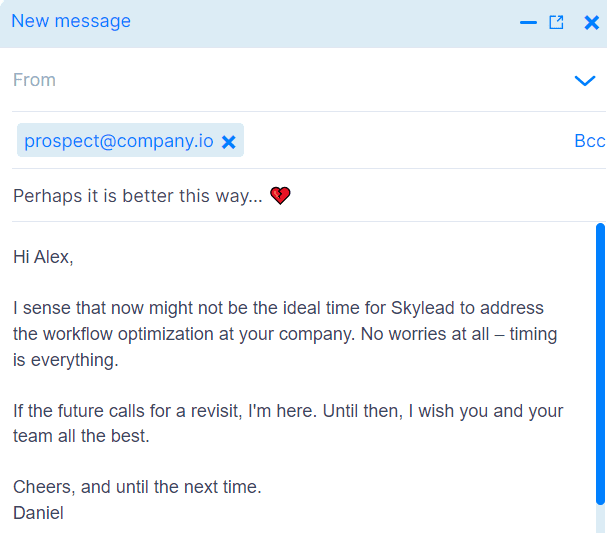
Why it works: If you've sent a couple of emails already and none of them worked, this is your sign to stop reaching out. While sending a so-called breakup email, it is best to evoke an emotional reaction from the prospect, as demonstrated in the email below. The key is to stay genuine.
#18 Follow-up email after a free trial (sales)
Subject: Free Trial Verdict: Thrill or Kill? 🧟♀️
Hi {{firstName}},
Just checking in after our thrilling free trial of {{product/Service}}. I’m curious to hear your thoughts!
Were there highlights, or perhaps something you missed? I'm here to clear any fog or explore possibilities.
For a quick chat, just ping me at {{phoneNumber}}, or let me know a convenient time for you.
Eager to hear your take!
{{yourName}}
Real-life example:
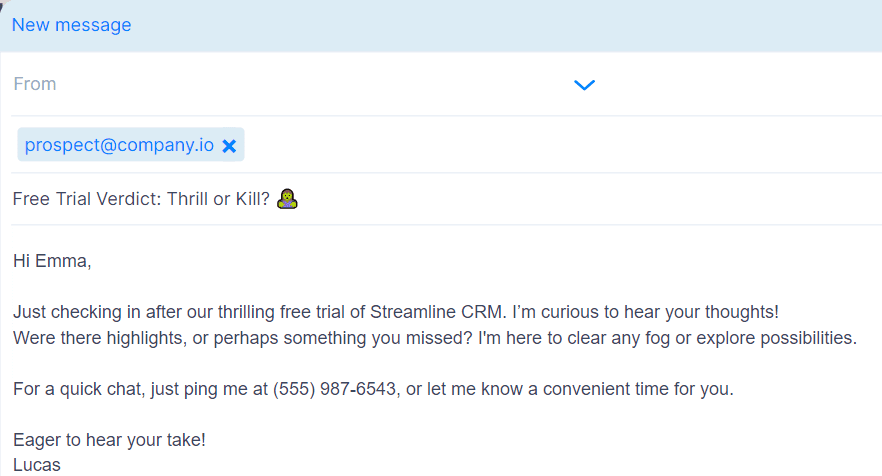
Why it works: Comparing your demo pitch to the best-selling album of all time? We say yes! Everyone likes a well-crafter themed message in their inbox, and chances of a reply are significantly higher.
#19 Follow-up email after no response to a job application (job seeker)
Subject: Resume for {{jobTitle}}: In Your Hands
Hi {{hiringManagerName}},
Wanted to confirm my resume for the {{jobTitle}} position has reached you. Looking forward to exploring how my background can contribute to {{companyName}}.
Awaiting your guidance on the next steps.
Warm regards,
{{yourName}}
Real-life example:
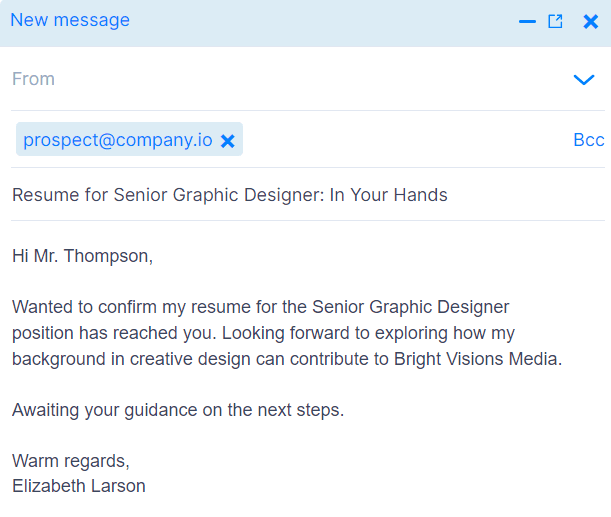
Why it works:
This is a very common scenario: it's been a couple of days or weeks after you’ve applied for the listed job, and nothing happened. So what do you do? You send a polite reminder and ask the hiring manager to give you details about the hiring process. That way, you’ll know where your application stands.
#20 Follow-up email after sending resume (job seeker)
Subject: Resume Dispatch: {{jobTitle}} Role
Hi {{hiringManagerName}},
I want to ensure my application for the {{jobTitle}} has landed in your realm. Ready to discuss how my unique skill set could add value to {{companyName}}.
If a brief chat would help, I’m all ears. Here’s my direct line: {{yourPhoneNumber}}.
Warm regards,
{{yourName}}
Real-life example:
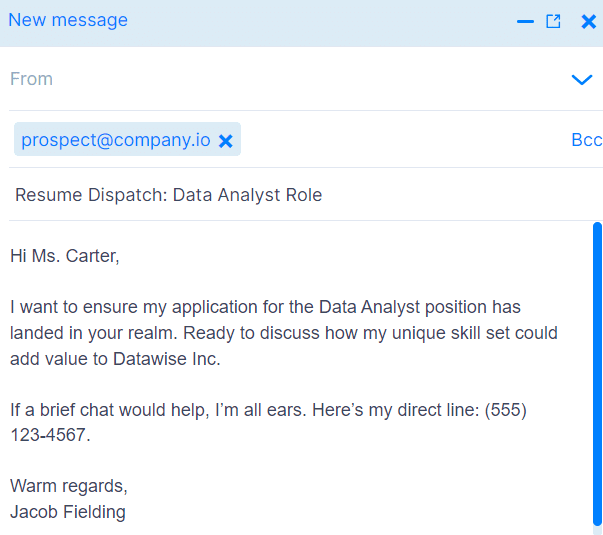
Why it works: When a position is open, hiring managers usually get hundreds of resumes daily and from various channels. Therefore, it’s easy for some resumes to slip through the cracks and go unnoticed. Politely asking the hiring manager if he had a chance to take a look at your accomplishments should do the trick, and give them a slight nudge they might need to notice you.
#21 Follow-up email after an interview (job seeker)
Subject line: Post-Interview Reflections: {{jobTitle}}
Dear {{interviewerName}},
Thank you for the thought-provoking interview. Our conversation opened new horizons, bringing the role and {{companyName}}’s vision into sharper focus.
Looking forward to any updates or next steps.
Warmest regards,
{{yourName}}
Real-life example:
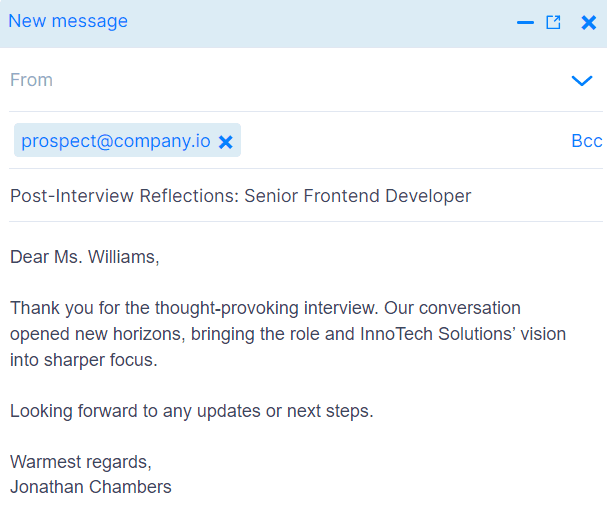
Why it works: Employers want present and engaged employees. If you’re interested in a position at a certain company, don’t hesitate to follow up after an interview. Ask questions, clarify everything that wasn’t clear while the interview happened, and seek out the hiring manager's opinion on how it went. Most job applicants don’t take this extra step, so don’t make that mistake if you’re really aiming to get the job.
#22 Follow-up email after no response after interview (recruiter)
Subject line: Here's the complete offer
Hi {{firstName}},
Time really does fly by, doesn’t it? It’s already {{DayOfTheWeek}} 😄
Anyway, I just wanted to touch base with you and go over our offer once again.
As we discussed, your conditions will be:
- {{Condition1}}
- {{Condition2}}
- {{Condition3}}
In addition, here are the benefits mentioned during our meeting. As our {{position}} you will have:
- {{Benefit1}}
- {{Benefit2}}
- {{Benefit3}}
Let me know how this sounds to you.
Kind regards,
{{yourName}}
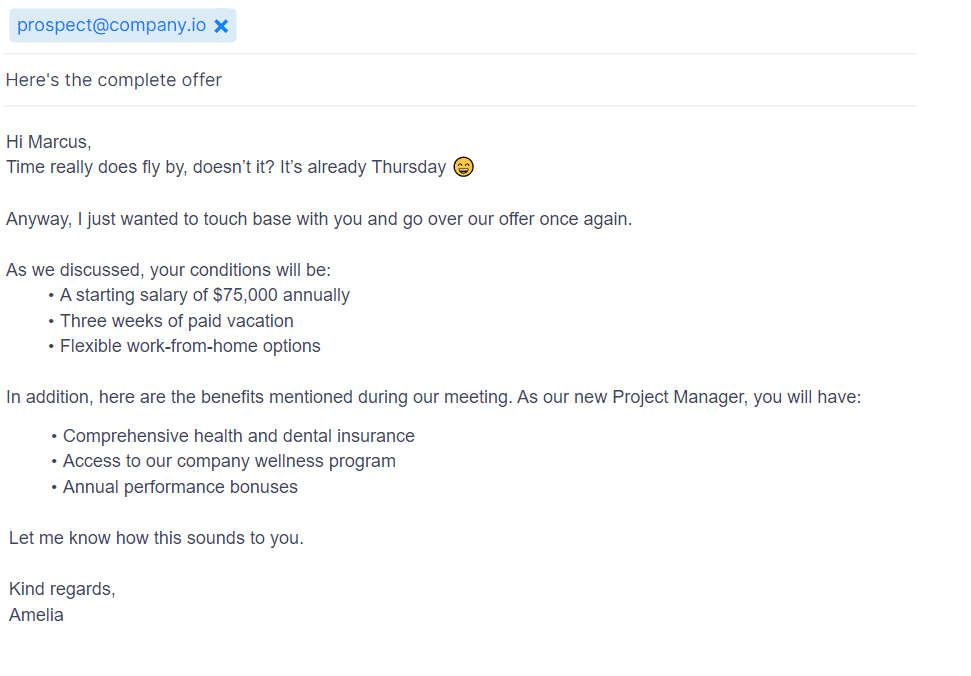
Why it works: We cannot talk about follow up email and not mention our recruiters. If you are an HR person and find yourself in a situation where your ideal candidate didn’t respond to you after the interview where you presented your offer, here is a template you can use to give them a nudge.
#23 Sample follow-up letter for job application status (job seeker)
Subject: {{jobTitle}} Application: Next Coordinates?
Dear {{hiringManagerName}},
I hope this message finds you well-rested and productive. In the quest for the {{jobTitle}} role, I'm writing to seek updates on our current position. Have we reached a new checkpoint, or are there further details I can provide?
Your status update is greatly appreciated.
With respect,
{{yourName}}
Real-life example:
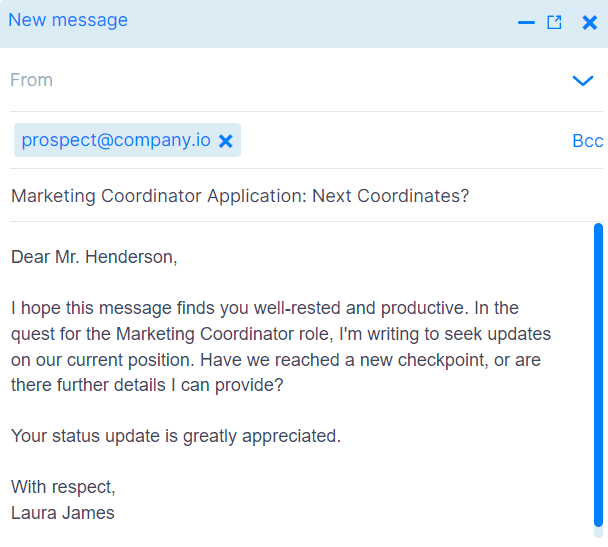
Why it works: Knowing where you stand in the hiring process is crucial when applying for jobs. Plus, it shows your interest in the position and your determination to fill in the vacancy.
Frequently asked questions
What specific strategies can be employed to personalize follow-up emails for different industries or roles to increase engagement?
Personalizing follow-up emails can involve referencing specific interests, recent accomplishments, or industry news relevant to the recipient's field. Tailoring your message to their unique context fosters a more personal connection.
How does the timing of a follow-up email impact its effectiveness, and are there optimal times of day or week to send these emails for better results?
The effectiveness of a follow-up email can be significantly influenced by its timing. Sending emails during business hours, especially mid-week, may improve open rates. However, considering the recipient's time zone and work patterns is crucial for optimal timing.
Beyond the provided templates, what are some creative examples of follow-up emails that have successfully converted initial non-responses into positive outcomes?
Creative follow-up emails often incorporate humor, personalized GIFs & images, comments, or interesting questions that relate to the recipient's interests or industry. Such approaches can help break the ice and engage the recipient more effectively, turning a lack of response into a positive conversation starter.
How do you politely follow up on an email with no response?
Make sure to wait the standard 2-5 business days before reaching out again. Your tone should be professional yet direct. Finally, you should add more value and information. Underlining that your product or service fixes their issues creates the right amount of urgency, which in turn makes them hit reply.
How do you follow up professionally after no response?
If your first email went unnoticed, your follow-up should start off with restating your goal briefly. Avoid using cliché phrases and slang. Also, try changing your approach in each new email. Finally, send each follow-up in a new thread to avoid ending up in the wrong part of the inbox.
What to say in a follow-up email when someone hasn’t responded?
Make sure to briefly remind them of your previous touchpoint and continue by adding additional value to your initial email. It also helps to create a sense of urgency by mentioning a challenge they might be facing daily and that your product or service can fix it for them.
How soon should you send a follow-up email after no response?
The standard waiting period for sending a first follow-up email after no response is 3-5 business days. Sending a premature follow-up can come off as spammy and overly aggressive, so make sure to wait a minimum of 3 days.
How do you follow up without being annoying?
To avoid being annoying and ending up in your prospects’ spam folder, make sure to wait the appropriate amount of time before sending another email. Also, make sure to keep each follow-up short and straightforward, with clear intentions and a strong CTA.
How long is it acceptable to wait to reply to an email?
If the email is urgent or deadline-driven, clearly state that in the subject line. The appropriate amount of time between your first email and a follow-up is 24 hours. Otherwise, give your prospect 3-5 days to respond. Also, if it requires an immediate response, consider using another communication channel.
Conclusion
We’ve come to the end of our follow-up learning journey. Our sales and marketing teams worked really hard to bring on the email campaign knowledge and experience we’ve gathered from years of constant testing and adapting, and hard work. After all, it’s how we’ve grown our user base from 2,500 to 10,000 users in nine months!
So, what have we learned about follow-up emails after no response so far?
- The more follow-ups you send, the higher the reply rate, but know where to stop.
- If you spend time crafting your email copy, the more likely you will boost open and response rates.
- If you build your follow-up sequences, you’ll save time.
- If you automate your outreach and create email follow-up sequences, you’ll keep better track of your prospects and the outreach phase.
- If you use other communication channels and practice multichannel outreach, you’ll boost your conversion rate.
- The more value you add, the more likely you’ll get a higher response rate.
And the next step? Choose Skylead to help you automate lead generation and your email sequences, plus add LinkedIn as another communication channel. By tapping into the possibilities of automated outreach, you double your chances of getting desired outreach results. Besides, you can always return to this article and reread the rules of crafting the perfect follow-up email, or simply use our follow-up email templates if you need a head start.
So, how do you get to Skylead? Watch our demo, test out Skylead today and discover the beauty of an outreach that thinks and works for you! You’ll see how our all-in-one tool can simplify your outreach efforts and get you where you need to be in no time. Trust us. Once you try it, you won’t know how you lived and worked without it! 🤩
